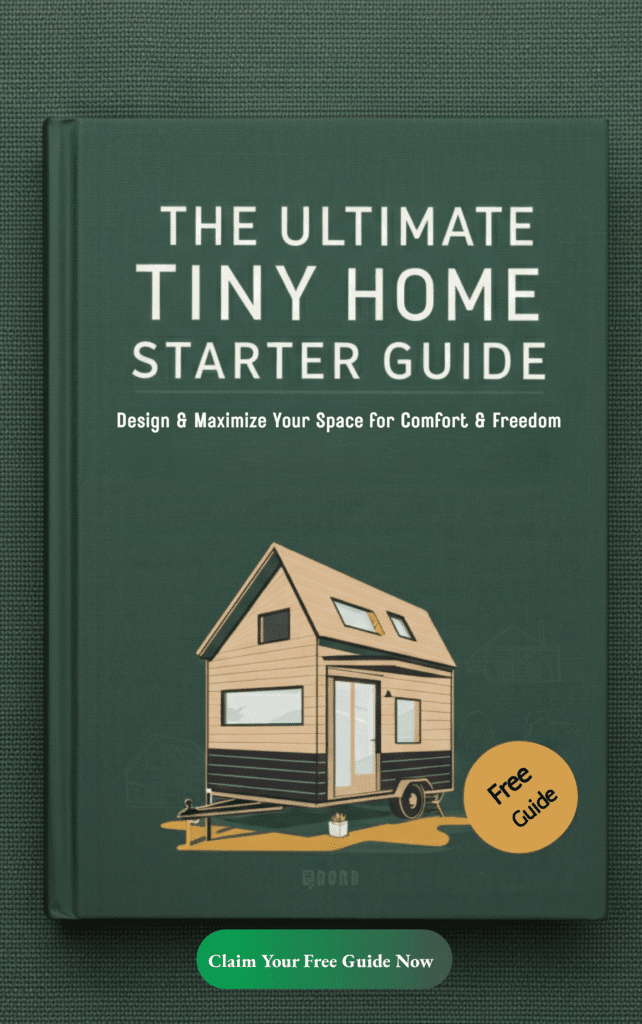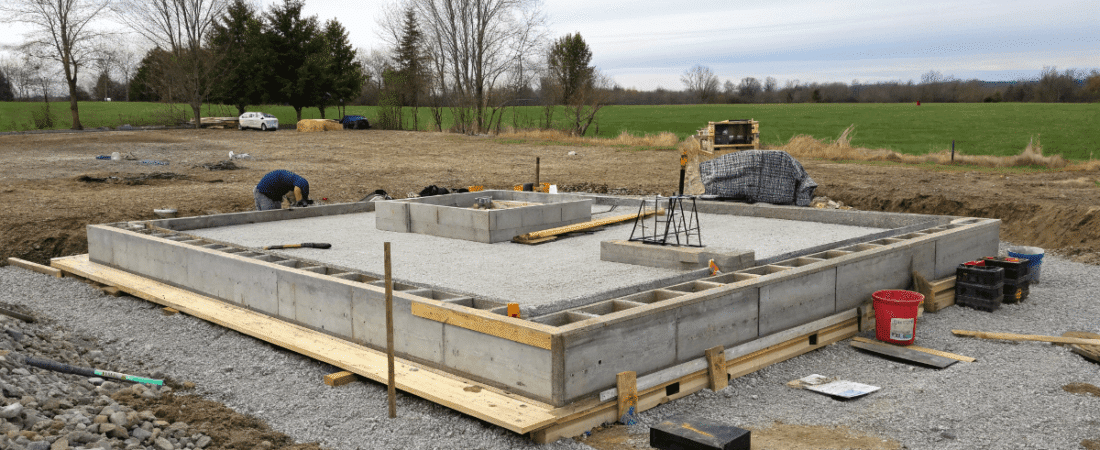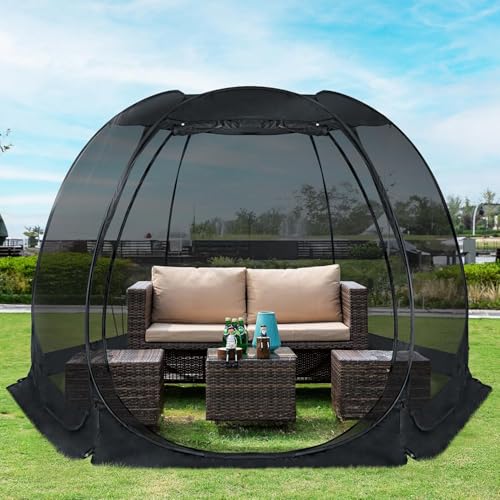The best foundation for tiny house is one of the first decisions to make when planning your build.
It’s a choice that can impact everything—from stability to cost. Assessing the building site is crucial, as it influences the construction process, compliance with local building codes, and the overall success of your tiny house project.
But don’t worry, I’m here to make this easier.
Let’s break down the options for tiny house foundations, and find the one that’s right for you.
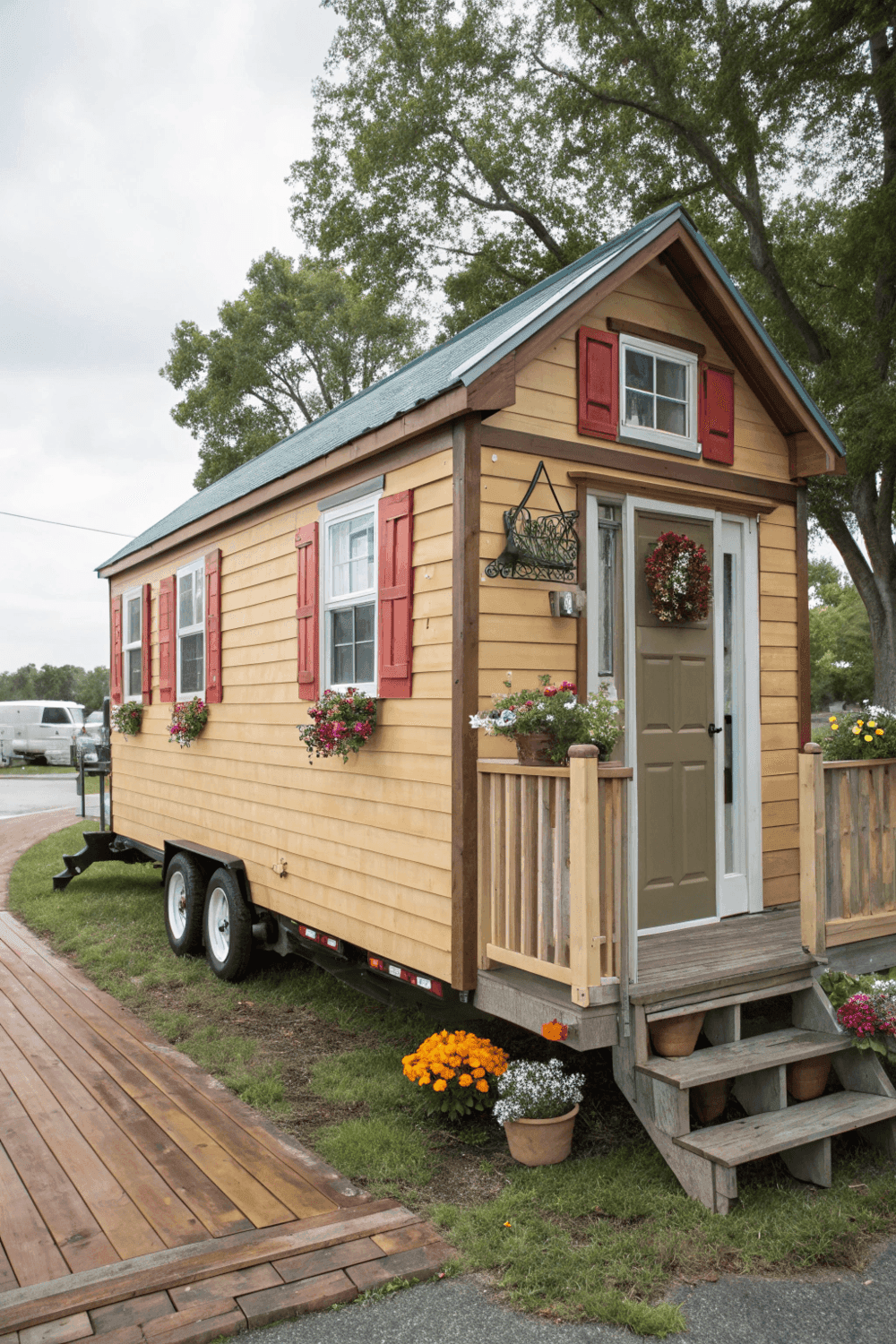
Understanding Tiny House Foundations
What is a Tiny House Foundation?
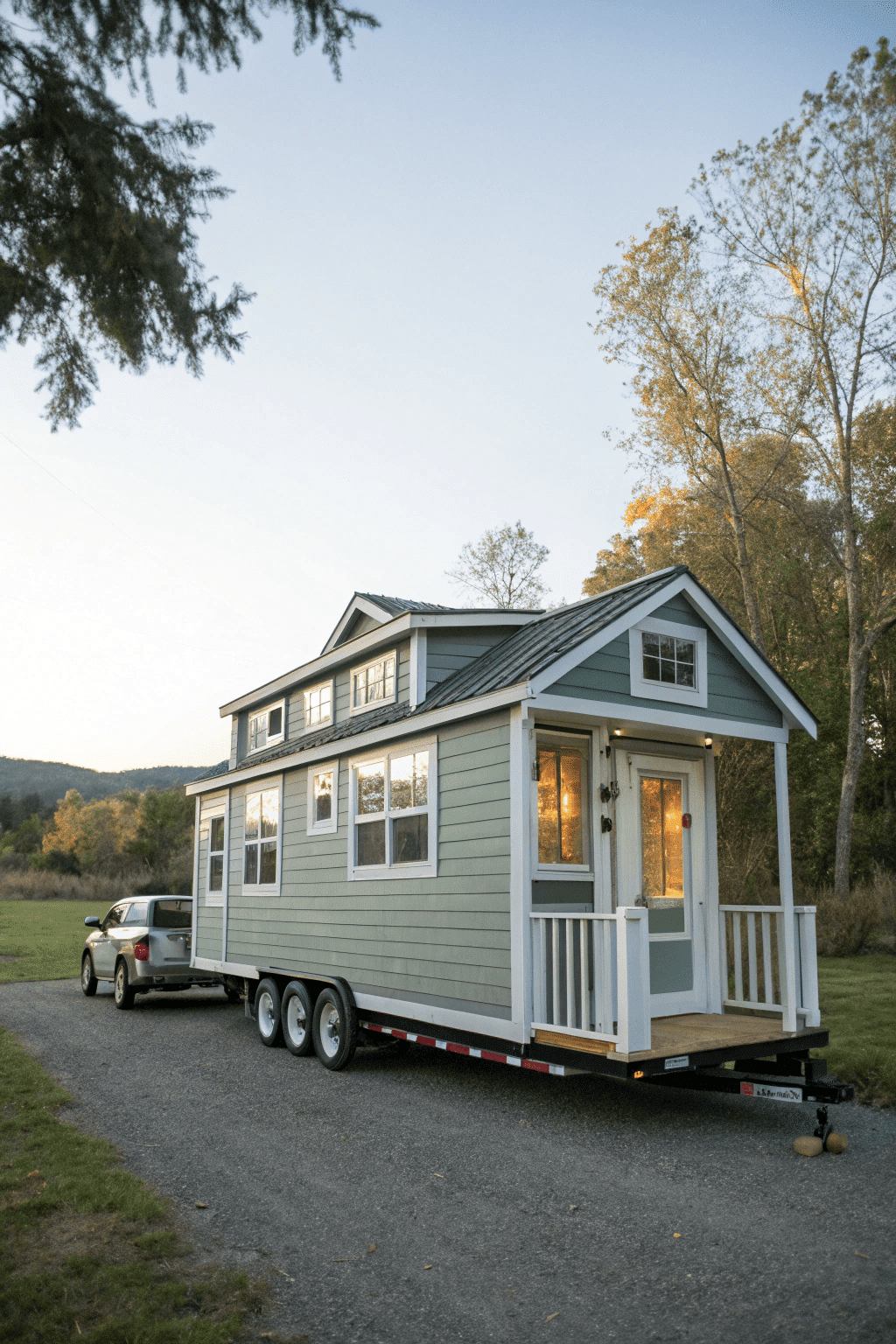 tiny house foundation is the structural base that supports your tiny house, ensuring it stands strong and secure. Think of it as the backbone of your home, providing the stability needed to withstand various environmental elements. Foundations can be crafted from materials like concrete, wood, or steel, each offering unique benefits depending on your specific needs. Whether you’re building on flat terrain or a sloped hillside, there’s a foundation type that can suit your tiny house perfectly.
tiny house foundation is the structural base that supports your tiny house, ensuring it stands strong and secure. Think of it as the backbone of your home, providing the stability needed to withstand various environmental elements. Foundations can be crafted from materials like concrete, wood, or steel, each offering unique benefits depending on your specific needs. Whether you’re building on flat terrain or a sloped hillside, there’s a foundation type that can suit your tiny house perfectly.
Importance of a Foundation for a Tiny House
The foundation of your tiny house is more than just a base—it’s a critical component that ensures the safety and longevity of your home. A well-designed foundation can handle the weight of your house, its occupants, and even the forces of nature like wind and snow. It also plays a vital role in preventing moisture damage and pest infestations, which can compromise the integrity of your tiny house. Plus, a solid foundation can boost the value of your property, giving you a sense of permanence and security. In short, investing in a good foundation is investing in the future of your tiny house.
Why Choosing the Right Foundation Matters
Your foundation is the base of your home.
It supports the entire structure, so it needs to be strong.
A good foundation also keeps your tiny house secure and level.
Without it, you risk damage, leaks, or other headaches down the road. Building on a permanent foundation enhances long-term stability and security, ensuring compliance with legal requirements and building codes.
That’s why thinking carefully about the right kind of foundation pays off.
1. Trailer Foundations
This is the most popular choice for tiny homes.
Using a trailer keeps your house mobile.
You can move your home wherever you want (as long as the road rules allow).
Why Choose a Trailer Foundation?
Mobility is key! Perfect if you plan to move your house around.
Trailers are built tough, so they can support the weight of your build.
No need for a permanent spot—park wherever you’re allowed.
What To Keep in Mind:
Trailers come with weight limits. You’ll need to calculate your home’s total weight.
Not all trailers are created equal. Go for a high-quality, heavy-duty one.
Anchoring becomes important so your house doesn’t shift while parked.
2. Concrete Slab Foundation
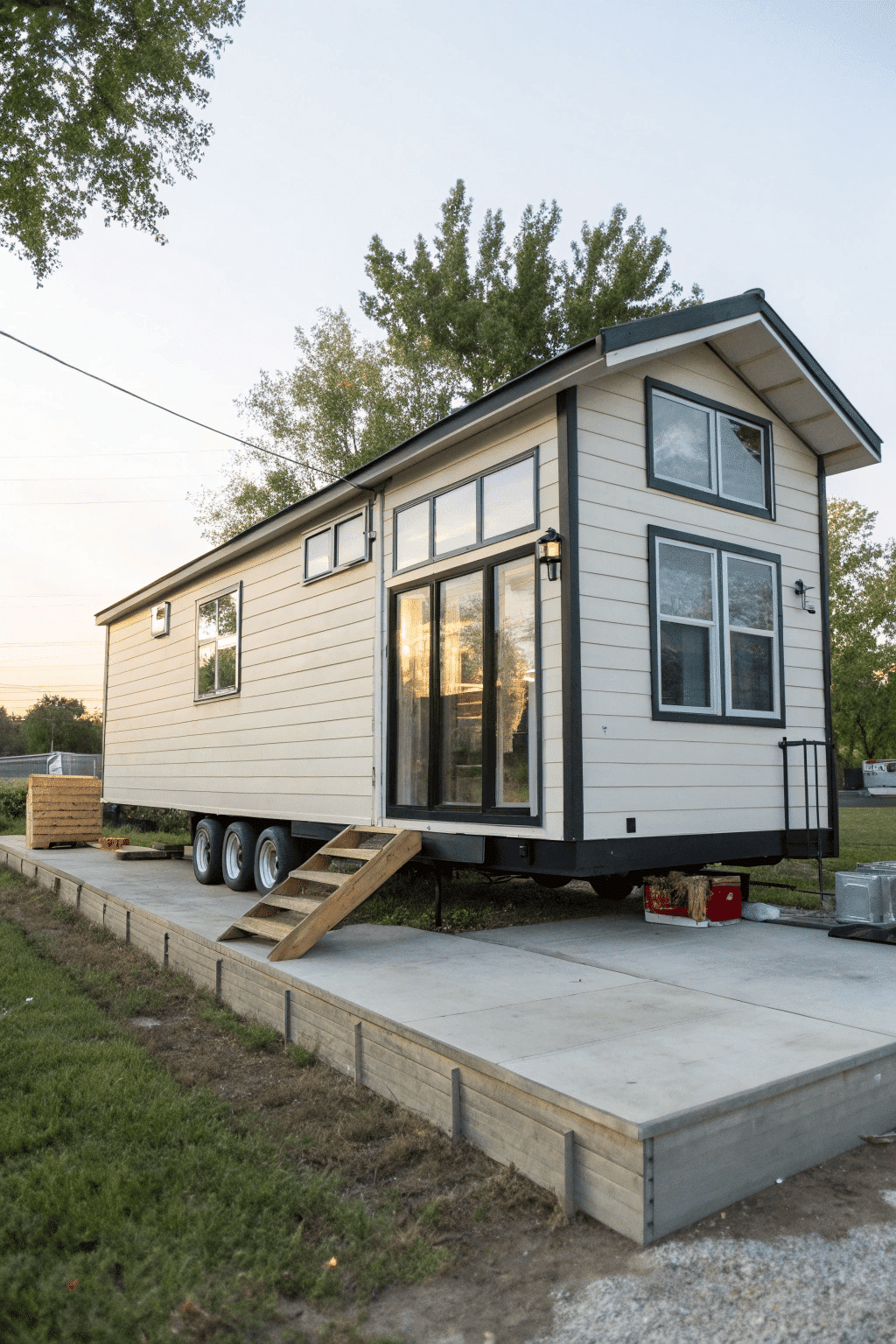
If your tiny house will stay put, a concrete slab is worth considering.
This option mimics a traditional home’s foundation.
It’s strong, durable, and long-lasting. A poured concrete slab is a common and cost-effective choice for a permanent foundation.
Why It’s a Good Idea:
It creates a very sturdy base.
Slabs are weather-proof and resist movement.
Great for areas where extreme weather happens often.
Slab foundations are cost-effective and have a faster curing time, making them a practical choice for many construction projects.
Things to Think About:
You lose mobility since it’s fixed to the ground.
Concrete isn’t cheap and requires preparation.
Permits might be needed, depending on your location.
3. Skid Foundation
A skid foundation lets you pick a semi-permanent option.
It’s like a happy medium between trailers and slabs.
It combines stability with flexibility. Skid foundations are a type of semi permanent foundation, offering a balance between stability and the ability to relocate.
Wooden beams (skids) sit under your house, making it possible to move with some effort later.
Why Pick a Skid?
Easier to DIY compared to concrete slabs.
Keeps your build off the ground to reduce moisture problems.
Offers better flexibility than slabs for future moves.
Drawbacks To Consider:
Requires heavy-duty skids to ensure durability.
You’ll still need a flat, prepared surface underneath.
It’s not as secure as a full slab or trailer.
4. Pier Foundation
A pier foundation elevates your house.
With this method, posts are secured into the ground, and your house sits on top.
This is a common choice in areas prone to flooding or uneven ground. A piers foundation employs vertical supports driven deep into the ground, offering stability for structures on uneven terrain.
Why Go for Piers?
Works perfectly on sloped or tricky terrain.
Keeps your home off the ground for better airflow.
Avoids draining issues during rainstorms.
Challenges with Pier Foundations:
Needs careful planning to properly distribute weight.
Weaker than concrete slabs in earthquake-prone areas.
Labor-heavy installation which can increase costs.
5. Cement Blocks or Pavers
Cement blocks or pavers can work as a simple foundation option.
They’re affordable, easy to find, and fairly simple to set up.
This option works better for smaller, lighter tiny houses.
Pros:
Affordable and quick to arrange.
Minimal tools required for the setup.
Can be adjusted or rearranged as needed.
Cons:
Doesn’t work well on uneven or soft ground.
Less stable compared to other foundation types.
Limited lifespan unless properly maintained.
Factors to Consider When Choosing a Foundation
Soil Conditions and Geographical Features
When selecting a foundation for your tiny house, it’s crucial to consider the soil conditions and geographical features of your build site. The type of soil, the slope of the land, and its elevation can all impact the stability and durability of your foundation. For instance, a concrete slab foundation might be ideal for flat land with well-compacted soil, providing a sturdy and level base. On the other hand, if your build site is on a slope or has unstable soil, a pier and beam foundation could offer better support and flexibility.
Local building codes and regulations also play a significant role in your decision. These codes can dictate what types of foundations are permissible in your area, ensuring your tiny house meets safety standards. Additionally, the climate and weather conditions of your location should influence your choice. In regions with high water tables or poor drainage, a crawl space or pier and beam foundation can help with ventilation and water management. Conversely, in areas prone to extreme weather like high winds or earthquakes, a more robust option like a concrete slab or basement foundation might be necessary.
Ultimately, the best foundation for your tiny house depends on a mix of factors, including the specifics of your build site, local regulations, climate, and your personal preferences. Consulting with a professional builder or engineer can provide valuable insights, helping you choose the most suitable foundation for your tiny house.
Tips for Choosing the Best Foundation
Determine Your Tiny Home’s MobilityWill your house stay put, or do you want it to move around? For flexibility, trailers are your best bet.
Think About ClimateIf you’re in flood zones or snowy areas, a taller foundation like piers helps.
Check Ground ConditionsSlopes, soft soil, or rocky ground may steer your decision.
Budget WiselyConcrete slabs are strong but could stretch your wallet. Trailers and skids tend to cost less.
Local Laws and RegulationsZoning rules might restrict what foundation types you can use. Check with local authorities before picking your base. There are various tiny house foundation options available, including basement, slab-on-grade, and more. Consider soil quality, costs, and benefits associated with each foundation type.
Final Thoughts
The best foundation for tiny house living really depends on your plans.
A trailer might be best if you’re traveling a lot.
If you prefer stability and won’t move your home, a concrete slab or pier foundation might top the list.
Choosing the right foundation ensures your tiny house lasts for years to come. Different foundation choices can significantly impact the overall tiny house foundation cost, with budget-conscious options like skids and dovetail trailers offering potential savings.
Do some digging, weigh your options, and pick the base that suits your dream home best.

